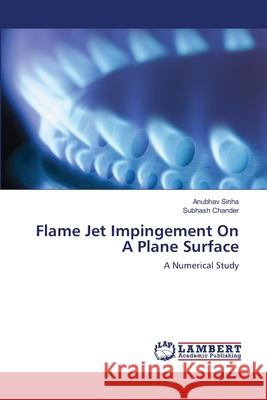Flame Jet Impingement On A Plane Surface » książka
Flame Jet Impingement On A Plane Surface
ISBN-13: 9783659202537 / Angielski / Miękka / 2012 / 124 str.
Flame jet impingement heat transfer is a critical process in many industries.It is a very old and effective technique used for a wide spectrum of applications, ranging from welding and glass forming to domestic LPG burner. Complete understanding of physical and chemical processes involved are required for proper burner design, improving efficiency and reducing combustion generated pollutants. The present work is based on the computer simulation of the most basic type of flame impingement heat transfer, i.e., impingement on a plane surface.The present study aims at investigating various operating conditions for a flame jet impingement and the effect of variation of these parameters on the flame structure and the heat transfer characteristics. First the case of single and twin isothermal jets impinging on a plane surface is studied. The case of flame jet impingement normal to the target plate was studied next.The effect of various operating conditions was evaluated. The effect of variation of exit velocity profile, equivalence ratio,Re, and nozzle to plate separation distance were investigated. Lastly, the case of flame jet impingement on an inclined flat plate is studied.











